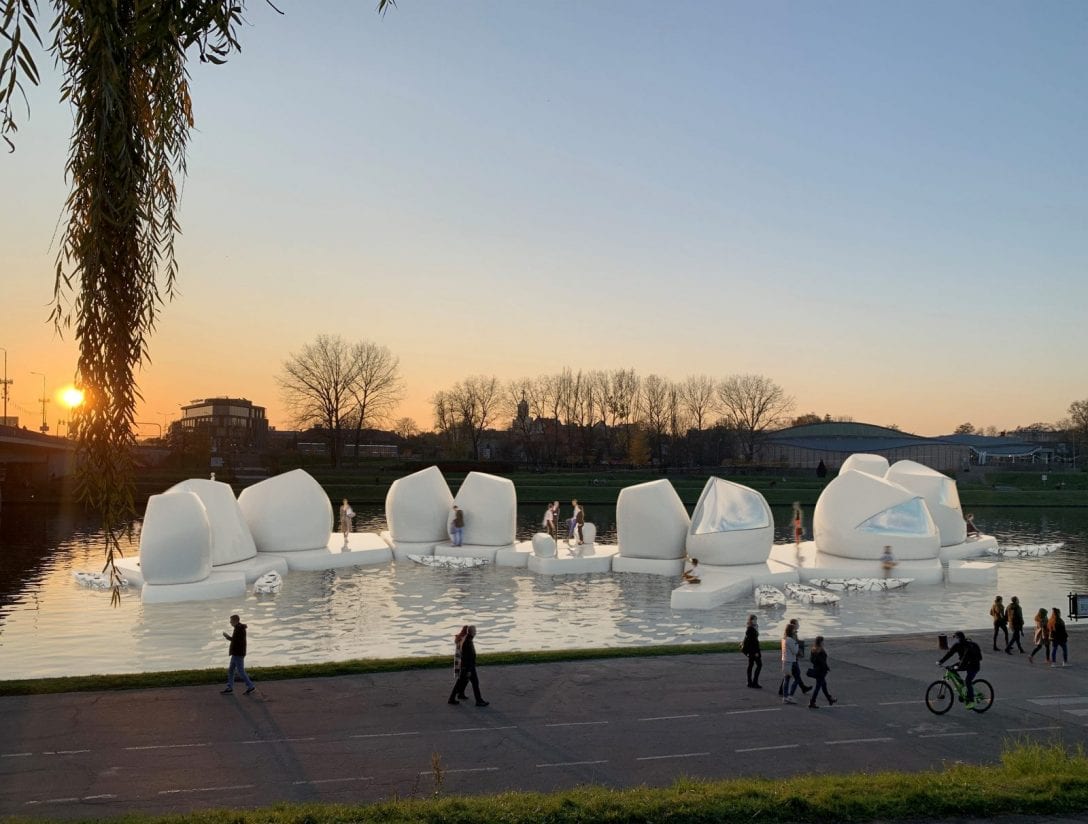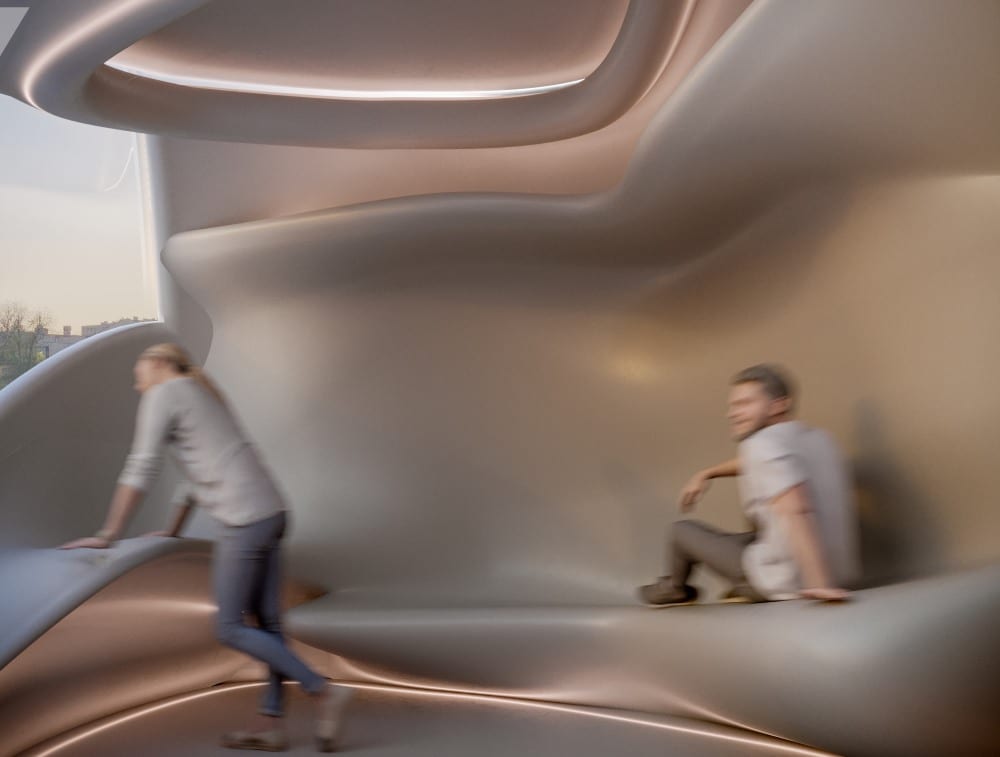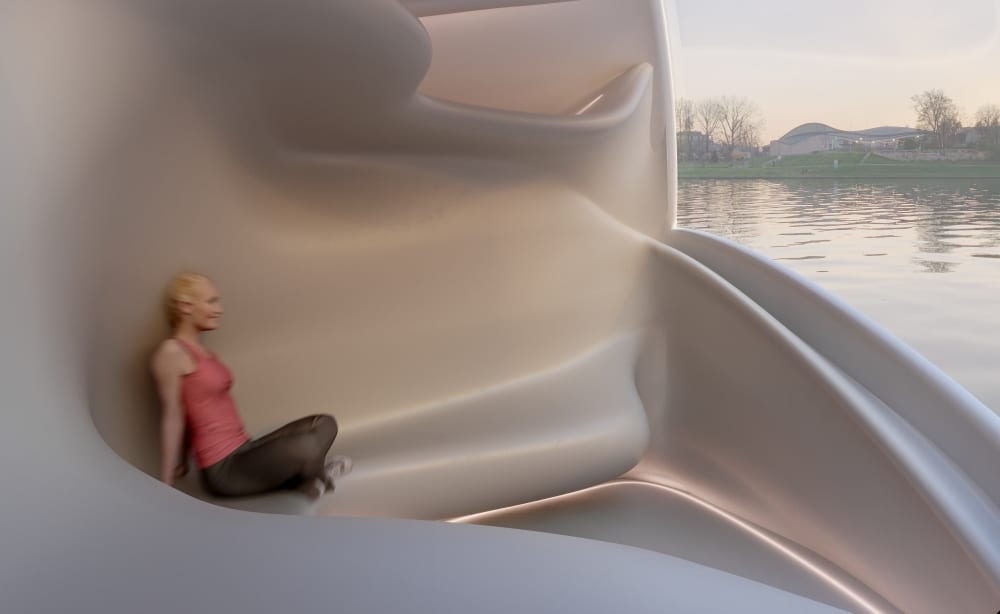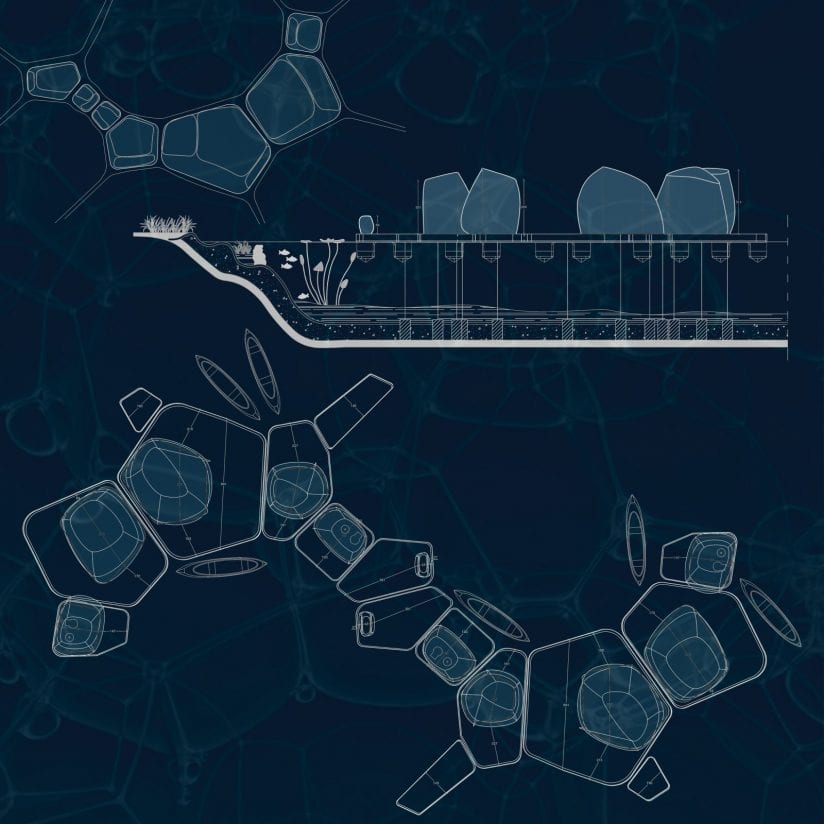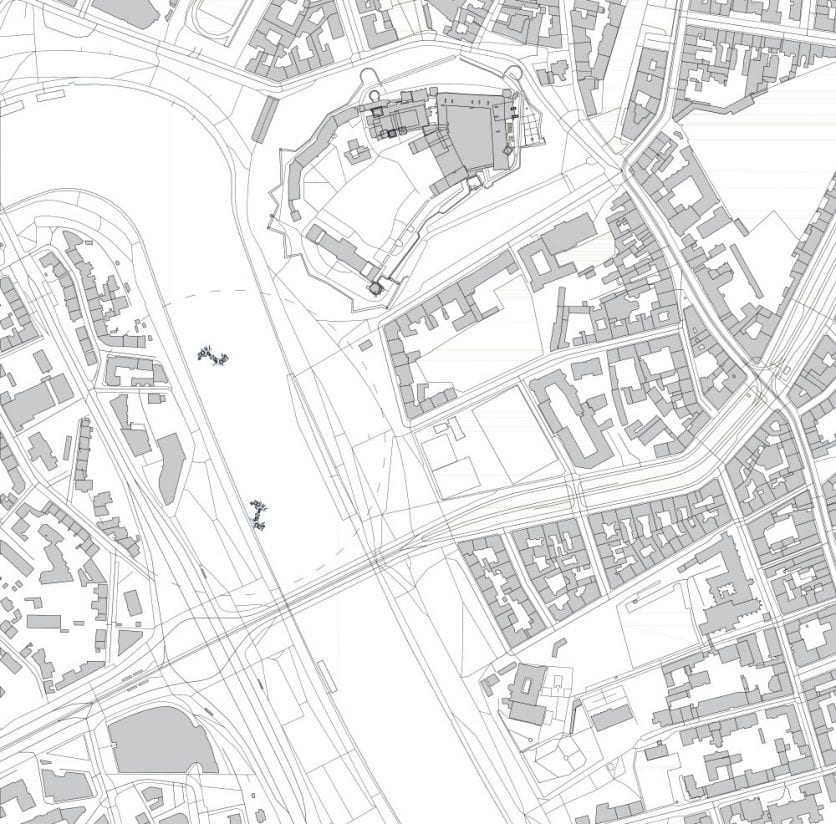Co-working Space in the Post Pandemic Era
Polish design graduate Agnieszka Białek has created a bubble-like concave as an innovative co-working space design concept that floats like water lilies that follow the same floating concept.
A graduate of the Academy of Fine Arts in Poland, Agnieszka Białek, owner of the design firm Monolight Studio has designed a water-based pod-like structure to keep us away from crowded office facilities. In times of social distancing, it creates a unique comfort zone and sense of security. Agnieszka was born in Cracow in close proximity to the Vistula river which was part of her local landscape and also the inspiration for the location of her pods.
“The idea for the project developed in the pandemic era while observing the forming of a new reality. Walks along the river boulevards during the quarantine were a crucial stage in the creation process,” says Agnieszka.
“In the project, architectural structures drift near Wawel Castle, the symbol of the city. The contemporary formation differs from the centuries-old kings’ habitat, currently one of the finest Polish art museums. This project does not interfere with the natural environment. The elements can be arranged in many different ways by changing their location on the river,” she says.
The creative process as the architect explains was guided by ecological values, especially the degradation of natural ecosystems, allowing the coexistence of nature and architecture. The design is an answer to the present Covid social distancing conditions.
Agnieszka feels that the situation is not permanent with the consequences from this pandemic becoming more real and changing everything we know, in the long run. “We know for sure that we are facing a new reality. Remote work has become the norm for most companies and will continue for a long time to come. Consequently, employees will be able to choose the time and form of work. To a large extent, we will notice fatigue with the home space. And it is in such conditions that this design concept plays out its role by making remote working more exciting, with a comfortable place for online meetings, or relaxing in the new reality of reduced touch.”
The design between the pods provides protection of personal space and privacy for potential users. The access limitations make these enclaves more private as these forms can be reached only through water transportation like a kayak.
“The interiors of the enclaves, with integrated furnishings, allow one to achieve any individual positions during work. With an hourly booking system, the co-working space is user-friendly for any individual, active during the day or at night, with no time limits. The starting point for creating the groups of cells was the natural environment – water bubbles. River foam shapes geometric arrangements that have become the main inspiration for the architectural form. Another influence was floating water lilies and their root system,” she says.
“The cells’ fragments forming the communication routes resemble the leaves of these plants, and the enclaves placed on the cells resemble their flowers. An enclave is a private workspace installed on a platform that rests on floats. The whole thing forms a single floating cell. These cells are anchored to the river bed and connected, allowing them to create modular structures on the water surface. The concept uses new technologies and methods of creation and design. The structures exist as 3D virtual models that could be 3D-printed in the future using waterproof, recyclable materials. Working with 3D printing in the architectural scale makes it possible to build organic-shaped modules in a few days,” she says.
The designer pays more attention to the quality of objects rather than their quantity. Oval forms evoke positive associations and create a sense of security and comfort.
“The project is an oasis of peace,” according to the designer, “Undoubtedly, Covid will shape new trends in architecture. We have already moved from social distance to digital closeness. We know for sure that the pandemic has already changed our relationship with work, space, and architecture. What changes will it bring in the future,” she asks.



